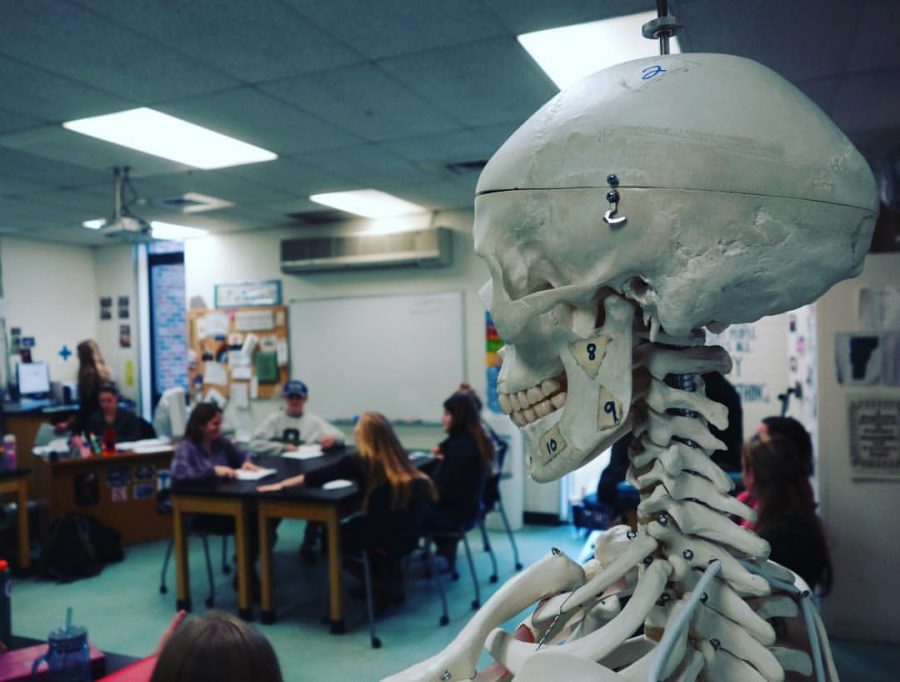How Covid has Changed Hands-on Learning within NCTC’s Programs: Part IV
April 20, 2021
Part IV
Human Services/ Curiosity Corners
According to the NCTC program website, Human Services “[helps] others…through…community involvement, and classroom instruction.” The students work with Curiosity Corners Preschool and learn about working with “school-aged children, children with special needs, and the elderly.” This program gets individuals ready to pursue careers as “teachers, counselors, social workers, child care providers” and many more. As students are accepted into the program, “They must be able to pass an Agency of Human Services background check in order to participate in work based learning at the Curiosity Corners Preschool.”
NCTC’s Human Services instructor, Jennifer Kondard, said, “At first, when we were in hybrid, it was difficult. I did synchronous learning with students in and out of school. Students on campus were getting the lecture and spending some time off campus, working with [St. Albans’s] Town and City School preschools and elementary ages. We are still missing the co-teaching time in the preschool.”
Working in the field looks very different this year. “We train kids to go their senior year to work at NCSS or Voices Against Violence. In a typical year, our students would go and be on site at an internship, and it is not as engaging as what the real experience would be,” Konrad said.
With the Curiosity Corners Preschool just around the corner, Beth Richey, NCTC’s preschool teacher, spoke about the positive experiences during the pandemic: “I have always loved teaching in our outside classroom and have spent so much more time outside with our preschool students this year. When we started our school year, the continued need for social distancing made it a priority to try to incorporate as much outdoor learning into our curriculum. Being outside gives us the ability to interact with our environment and an opportunity to differentiate activities typically done in our inside classroom. Both our preschool students and Human Services students have enjoyed this change.”
Richey spoke about the differences within the normal day-to-day activities due to the pandemic: “In our classroom, both inside and out, our learning looks pretty typical. Our preschool students still play and interact with others. These experiences may look a bit different than a normal year but are so beneficial to the social-emotional development of our preschool students. We do our best to social distance, using our “bird wings” to remind our students to space themselves apart. We have become proficient hand washers between every activity and also have become resilient at wearing our masks.”
As Human Services students work within the preschool environment, Richey said, “They develop relationships with the preschool students, encourage interactions between preschool students and help preschool students develop their play schema.”
The pandemic has given not only students but teachers an opportunity to learn in a variety of ways. “It has helped me to be more thoughtful about the most important parts of my curriculum, and what I want them to get out of my class. I have also felt that there has been an increase in collaboration between educators in problem solving and making the best out of a very strange and taxing year,” Richey said.
“Clearly, there are things that we hope we can do with our students soon. I am choosing to focus on the positives right now,” Richey added.
Medical Professions
According to the NCTC program website, Medical Professions is a program designed for students who want to “[pursue] a career in medicine, nursing, physical therapy, radiologic imaging, laboratory technology” and more. The students go off campus and are placed in “ local medical facilities to apply their learning to real life situations.”
When asked how the pandemic has positively impacted the work environment, NCTC’s Medical Professions instructor, Tim Hurteau said, “One big positive is the fact that we are able to branch out and get virtual speakers from larger hospitals and organizations that are not in the area. This allowed us to expose our students to elements in healthcare that otherwise we may not have had access to.”
The restrictions due to the pandemic have made it difficult for individual classrooms to accommodate with the distancing procedures. “One big shift for us is that, due to our Medical Professions One class size, we had to relocate to the National Guard Armory, so that we could safely distance while being able to offer in-person instruction four days a week,” Hurteau said.
Hurteau also spoke about the hands-on procedures within the classroom that have been reinforced due to the pandemic: “When we do hands-on activities, we follow the procedures that are common in the field today: we perform regular hand hygiene, wear the same level or personal protective equipment used in the field and take extra time to review infection prevention on a regular basis. Given that we deal with healthcare on a regular basis, some of these practices are done regardless of whether Covid is a factor or not.”
“The greatest limiting factor for our students is that the live job shadows have had to be put on hold due to Covid restrictions present in the healthcare offices,” Hurteau added.

